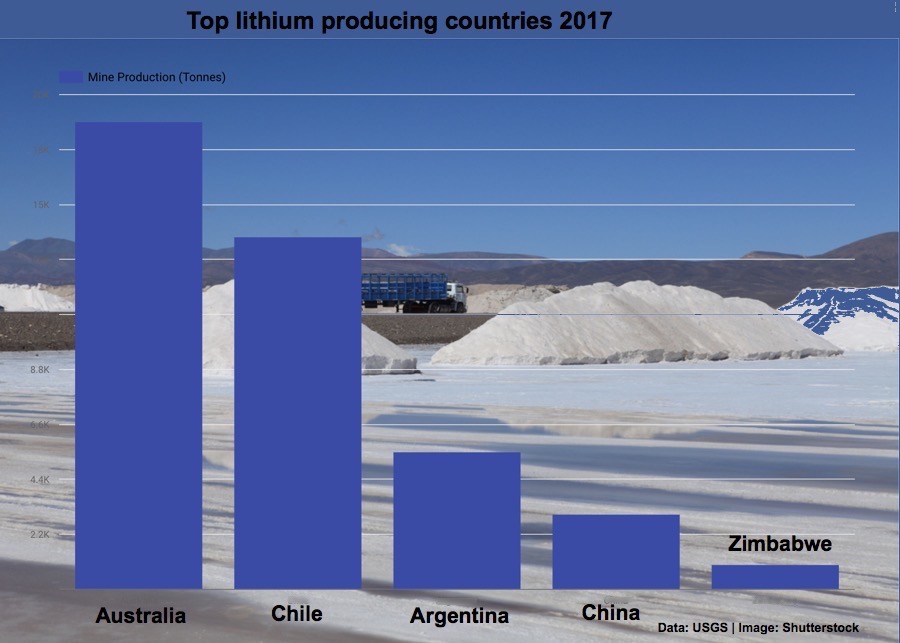
Lithium exports from Chile, the country’s with the largest known reserves of the white metal in the world, jumped in 2017 becoming its fourth largest mining export behind copper, molybdenum and iron ore.
Shipments of the key ingredient for making batteries that power electric vehicles (EVs) and high tech devices, hit $684.2 million last year, up 47% from the $465 million they represented in 2016, according to figures published by the Chilean Copper Commission (Cochilco).
Copper remained Chile’s main mining export, representing 89% of the total or $33.9 billion. Molybdenum came in second place at $1.2 billion, while iron ore took came number three at just over $ 1billion.
Both Chilean authorities and analysts believe lithium has the potential to become the nation’s second largest mining export. Earlier this year, the South American country’s development agency Corfo struck a deal with local producer SQM, allowing the private company to expand its production capacity of lithium from 48,000 tonnes to 70,000 tonnes this year, and then to 100,000 tonnes by 2019.
Geological Fortune
All of the Chile’s reserves are found in brines, underneath vast salt flats located in the north. Brines only require enough space for evaporation to occur, which is taken care of by the sun and the expansive solid surface that is a salt flat.
In contrast, reserves in Australia, the world’s top lithium producer according to the United States Geological Survey (USGS), are found in hard-rock sources, which make them more expensive to process than brines.

Aware of its geological good fortune, Chile has announced plans to build out a downstream processing and battery industry.
“By 2035, Chile could have an industry of about $10 billion, made up of a combination of carbonate and lithium hydroxide output as well as value-added products, such as cathodes,” Sergio Hernández, Cochilco’s executive vice president, told MINING.com last month.
Investors, however, are growing increasingly concerned about a wave of new lithium projects sprouting up from Australia to Nevada to take advantage of rising prices. Lithium carbonate, a key ion battery raw material, have climbed almost 40% in the past 12 months on the back of increasing electric car production, according to Benchmark Minerals Intelligence.
Shares in the world’s largest producers of lithium, in turn, have gone the opposite way this year, following double-digit gains in 2017.
